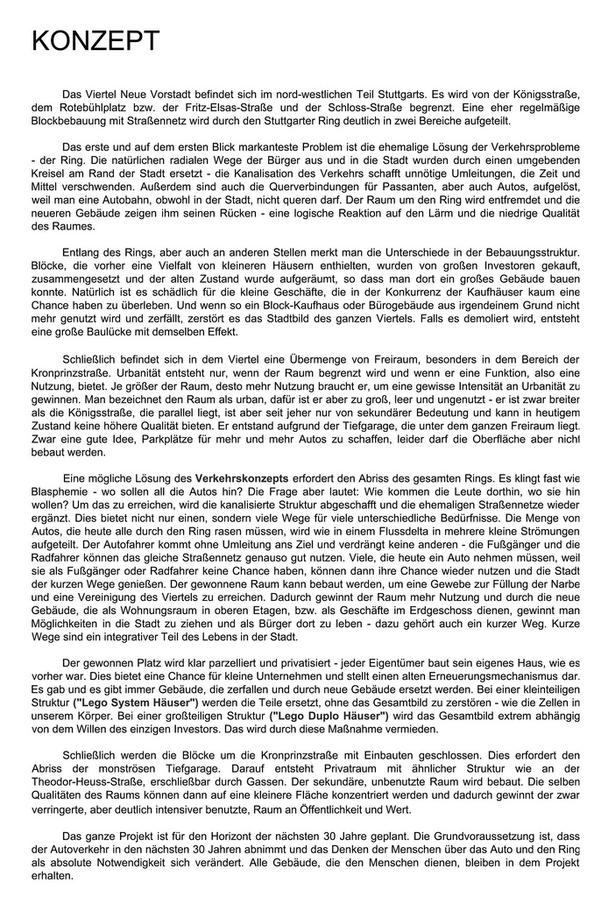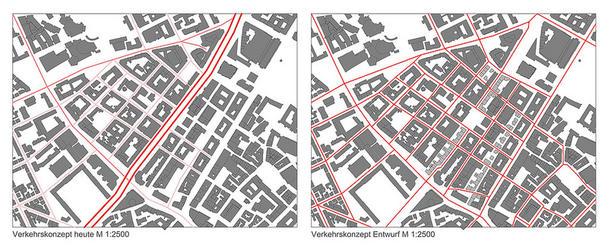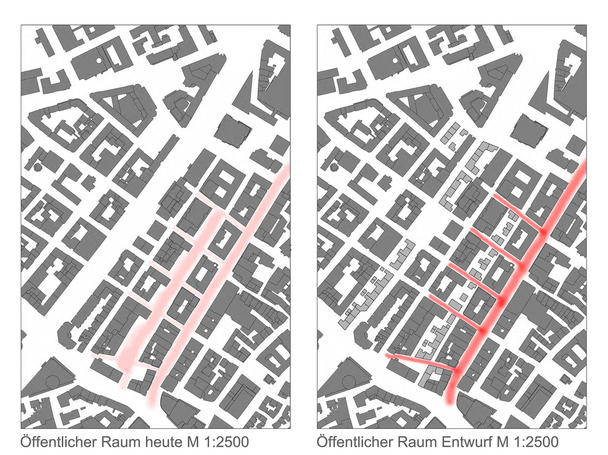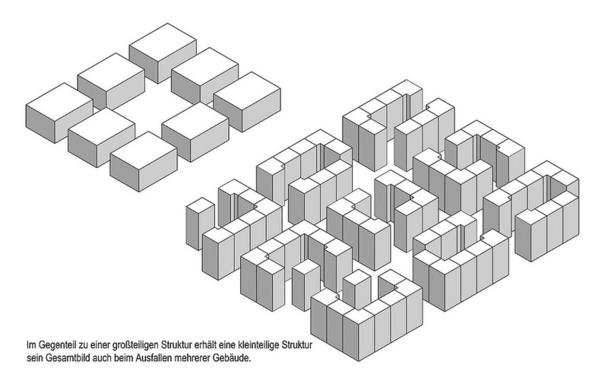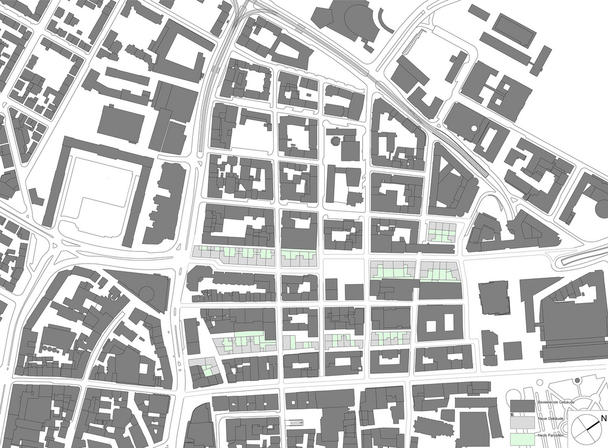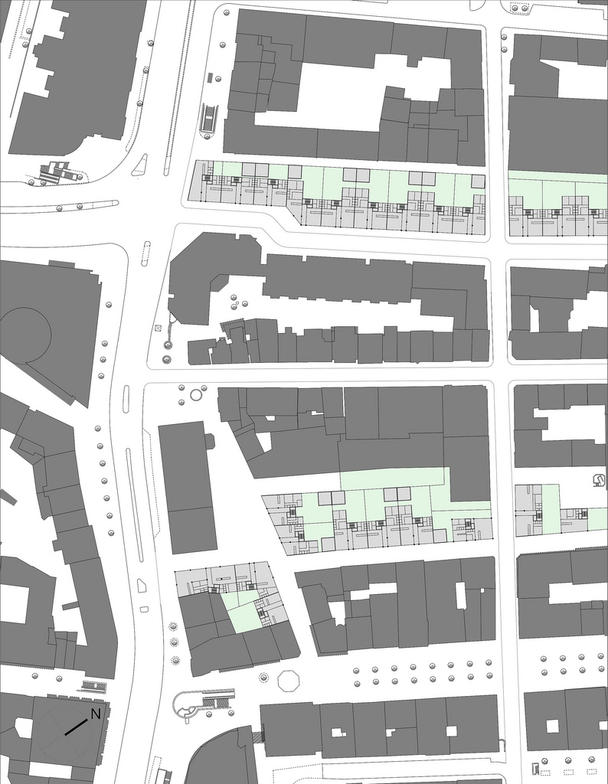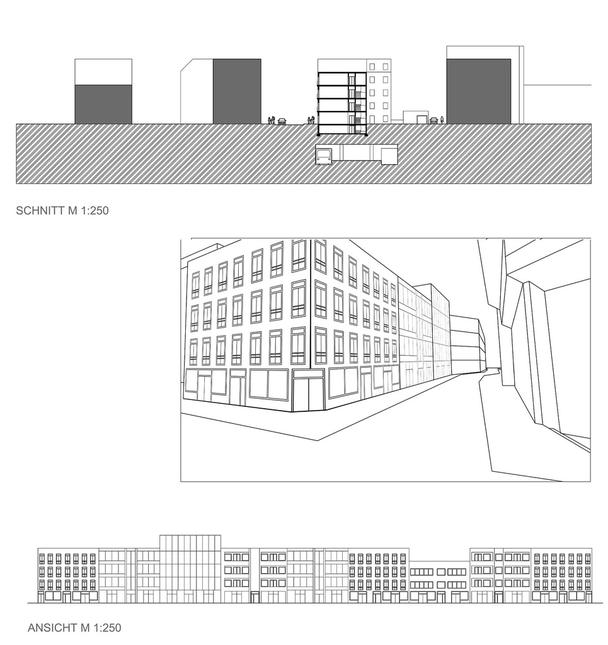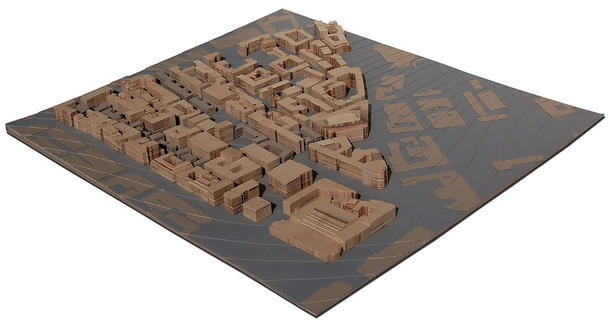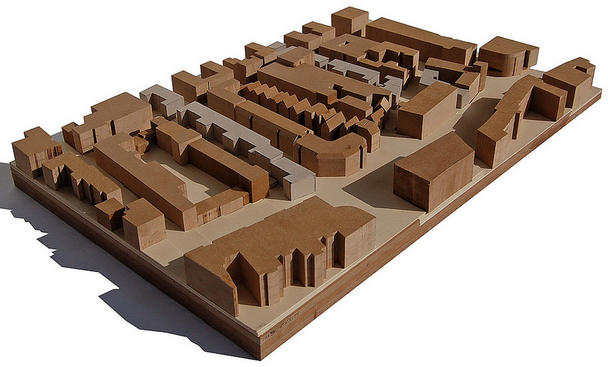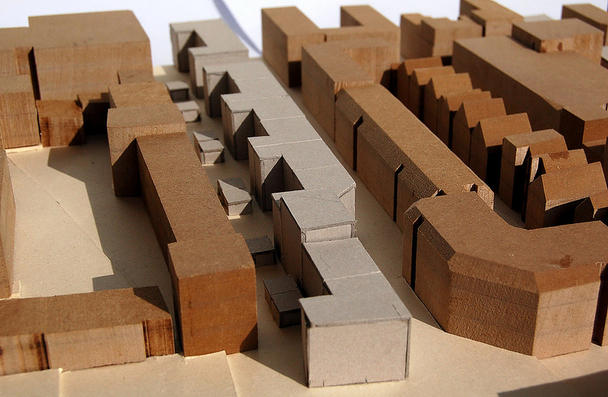Entwurf: Stuttgart - Von der Autostadt zur Bürgerstadt
Marek Statelov, Mai 2012
Das Hospitalviertel soll aus seiner ‚städtebaulich marginalen‘ Lage wieder mit der Innenstadt verbunden werden. Für den Autor nehmen die Theodor-Heuss-Straße und die Kronprinzenstraße dabei jeweils eine Schlüsselposition im Gefüge der Stadt ein. Beide bilden derzeit einen morphologischen Bruch aus, stellen auf unterschiedliche Weise eine Grenze dar.
Die Theodor-Heuss-Straße in ihrer einseitig belastenden Nutzung erzeugt auch vom Maßstab her eine Barriere für die Kontinuität der Räume, so dass sich die Stadtteile bisher baulich abschotten. Der Autor zeigt welche Möglichkeiten durch die Setzung neuer Baulinien und einer Parzellierung für die Architektur entstehen könnten.
Die Kronprinzenstraße dient heute hauptsächlich als Anlieferzone und Erschließung von Parkraum und erhält damit einen Hinterhof-Charakter. Konsequent wird dieser halbprivate Raum parzelliert und zu einer bebauten und verdichteten Stadtfläche. In der Nachbarschaft wird so der Wert des vorhanden öffentlichen Raumes gesteigert.
Die Vorschläge der verdichteten Räume können nur mit Einwilligung der Nachbarn umgesetzt werden. Als Argumente könnten Abtretung von Grundstücksrechten, Erweiterung von Gebäuden oder der Verkauf von Grundstücken dienen. Zudem sind hier langfristige Planungen als Prozess von Jahrzehnten die Grundlage des Konzepts.KS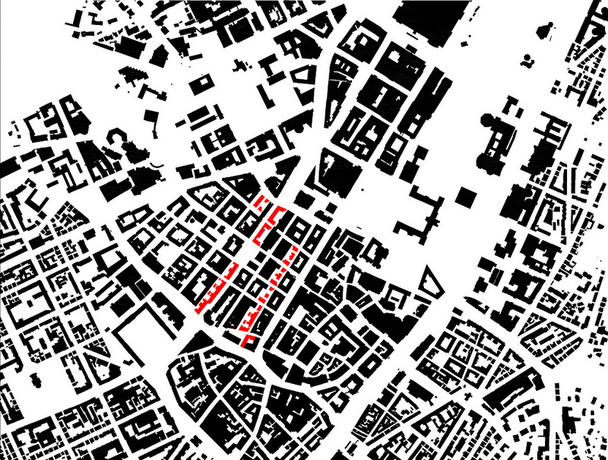
Schwarzplan
Stuttgart – The City of short routes – (Re)Unification of the Neue Vorstadt
The district Neue Vorstadt lies in the north-west part of Stuttgart. Its borders are defined by the Königsstraße, Rotebühlplatz, Fritz-Elsas-Straße and the Schloss-Straße. The Ring divides the district into two parts.
The first problem of the place is the so-called solution of the traffic problems from the 60s – the highway, commonly known as the Ring. The natural radial ways of the citizens to and from the city were replaced by an enormous highway-circle on the borders of the city center. The second problem is the large scale of the buildings, occupying entire blocks by themselves close to the highway – for an investor it seems as a good idea, but for the city it becomes a problem once such a building becomes unused or demolished – the resulting fallout affects the entire block. Finally there is the usually highly endorsed „free space“. Here it is so widespread that the buildings themselves cannot facilitate it and the space becomes dead. Especially when parallel to the Königsstraße which counts as the main boulevard there is an even broader „street“ which serves mainly as supply road.
The solution in the project needs the entire profile of the Ring to be demolished on the site. Recent studies show the overal descent of traffic in places where the highway got closed even for a short amount of time and that, if there are enough hierarchy-less roads in all directions, the traffic situation not only doesn't deteriorate, it improves. The project reconnects the streets which head tangentially from and to the city, allowing the pedestrians, the bicycles and the cars an even coexistence and short ways without the need to run in circles on the Ring. Such a step releases great amounts of space which can be, while also addressing the second and third problem, built upon.
The new space on the Theodor-Heuss-Straße will be parcelated and sold to private persons, who can build structures up to 4-5 floors high, with commerce (shops, services, offices etc.) in the ground floor and mostly flats on the upper floors. Thanks to the flats people can repopulate the city – they can get themselves closer to their needs and don't have to use cars to move around. Thanks to the ground floor commerce even their needs come closer to the people, further minimising the need for individual middle-way transport. Thanks to private ownership it is endorsed for a structure with many small pieces, which can be replaced without destroying the entire block and traumatising the citizens.
The empty space which is the Kronprinzstraße parallel to Königsstraße will also be built upon. For this the huge underground garage would have to be demolished. Utilizing a similar building structure as on the Theodor-Heuss-Straße, the remaining public space will be more concentrated and intensified for the good of all inhabitants. The new buildings always leave space for the old, so they can be supplied through smaller roads.
The entire project is planned for the horizont of the next 30 years. The main „problem“ remains the car, although its status as absolute necessity should in the future change and the solutions in this project are meant to help people reach their destination by as few means as possible. It's not „When there's less traffic need, we will demolish the Ring, build on it and allow people back in the city“, but „We will allow people back in the city by demolishing and building on the Ring, thus minimizing the traffic need“.
Verteilung des Verkehrs
- Verkehrsnetz wird mit den Stadträumen in Übereinstimmung gebracht und gleichberechtigt verteilt
Öffenlicher Raum wird verdichtet
- die Teile des öffentlichen Raumes, die zu Anlieferzonen und Garagenzufahrt geworden sind, werden umgewidmet und bebaut.
Plädoyer für eine kleinteilige Bautypologie
Rahmenplan i.M.: 1:1000
Auschnitt Lageplan i.M.: 1:500
Vertiefung i.M.: 1:250
Modell i.M.: 1:1000
Modell i.M.: 1:500
